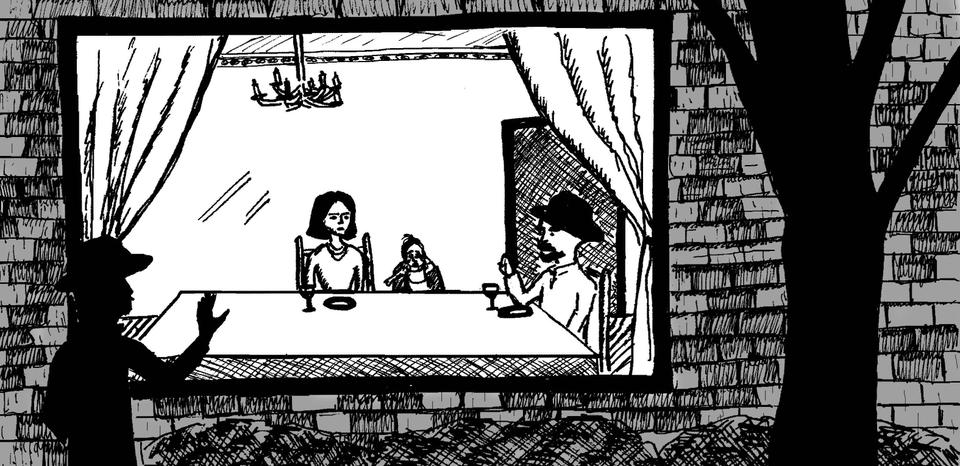
News
Cambridge Residents Slam Council Proposal to Delay Bike Lane Construction

News
‘Gender-Affirming Slay Fest’: Harvard College QSA Hosts Annual Queer Prom

News
‘Not Being Nerds’: Harvard Students Dance to Tinashe at Yardfest

News
Wrongful Death Trial Against CAMHS Employee Over 2015 Student Suicide To Begin Tuesday

News
Cornel West, Harvard Affiliates Call for University to Divest from ‘Israeli Apartheid’ at Rally
Javier Marías Fantasizes ‘While the Women Are Sleeping’
'While the Women Are Sleeping' by Javier Marías (New Directions)

The unifying element in all 12 short stories of Javier Marías’ most recently translated collection, “While the Women Are Sleeping,” is the fantastic. By breathing life to a series of unlikely characters, including a dead narrator and a murderous lover, Marías lends a tinge of the unreal to each story. The unexpected serves not only to entertain and delight, but also to establish a vast, creative space. “While the Women are Sleeping,” a collection of tales written by MarÌas from 1965—when he was 16—to 1998, is a series of stories that are at once humorous, thoughtful, and imaginative.
The titular story, which features a man named Alberto Viana and his younger lover Inés, is narrated in the first person by a frank observer, setting the tone for the anthology. The narrator moves naturally, if idiosyncratically, between somber observations about love and comic asides. Within one paragraph, he says, “I think what drove us to seek out their company was that they offered us a rare sight, one from which it’s always hard to look away: the spectacle of one human being adoring another,” and in quick succession, “her bikini bottom was minuscule and revealed that she was entirely free of hair, which made one think (well, made me think) that she must have had a Brazilian wax before she arrived.” This rounded narrator brings attention to the eccentric and unpredictable turns that any commonplace thought could take.
Through this unusual voice, Marías tells a story whose most prominent aspect is the possibility that gleams through the actuality of what is told. “While the Women are Sleeping” is uncanny and memorable because of the unwritten ideas to which the work alludes. Viana, speaking to the narrator, asks, “how do you know it’s not Inès who has died at my hands, and that’s why I shaved off my mustache, a while ago, before you came down, before I came down?” One can only wonder if Viana’s bizarre comments––“She will have to die before me, when I can no longer stand my adoration of her. One day I’ll have to kill her, don’t you see?”––actually amount to a larger, tragic reality. A vast space for what is possible is created yet never fulfilled, allowing the elegant air of unfulfilled potential to linger even after the story’s finish.
Marías uses this technique through much of the collection. In “An Epigram of Fealty” Mr. James Lawson, the manager of a prestigious rare bookstore, encounters a homeless man who claims to be John Gawsworth, to whom Dylan Thomas dedicated a series of poems. Mr. Lawson does not believe him and sends him away, but the last lines in the story betray a mysterious suggestion of what is unlikely but possible: “A copy of ‘An Epigram of Fealty’ bearing John Gawsworth’s signature would be worth twice as much. A thousand pounds, he thought. Lawson looked up, but the window was still empty.”
Marías explores possibilities rather than actualities with his characters as well. John Gawsworth is a person in real life and a writer who claimed to be the King of Redonda, a small island not recognized as its own country. In stories like “The Resignation Letter of Señor de Santiesteban” and “The Life and Death of Marcelino Iturriaga” Marías takes this space-creating method to another level by introducing ghosts as the main characters. These fantastic characters are real within the stories, but by their natures as “undead” humans without bounds, they are the perfect vessels to carry limitless possibilities. The ghost narrator of “The Life and Death of Marcelino Iturriaga” gives a brief summary of his life from his grave, but ends the tale by saying “this is my life and my death, where there is nothing.” However, because he can speak beyond the grave, the nothingness is in fact a space that must be filled by what will be the unwritten but ongoing narrative of Marcelino Iturriaga.
Tellingly, Marías explicitly references the literary technique mise en abîme in the story “Lord Rendall’s Song.” The French term, which translates to “placing into infinity,” is often used to describe the never-ending image produced by standing between two mirrors. In stories like “Lord Rendall’s Song” and “Gualta” Marías doubles the main character. The narrator of “Lord Rendall’s Song” comes back from a war to find himself of four years ago in his house. He sees what could have been had he not gone to war through his own window. In “Gualta,” the narrator meets an exact replica of himself, in both looks and mannerisms. Wanting to distinguish himself from his double, he slowly changes himself into someone else, leaving behind what is real about his identity for what is completely beyond the bounds of what he has thus far known.
The narrative structures of “Lord Rendall’s Song” and “What the Butler Said” are also instances of mise en abîme. Both of these stories are prefaced by a story behind the story. It becomes impossible to tell where the author ends and the narrator begins, between what is real and what is fictive.
The force of “While the Women Are Sleeping” comes from Marías’ method of provoking the imagination. By leaving room for the reader’s own idiosyncratic interpretations, the tales leave a marked impression. By highlighting the possible and constructing the fantastic, Javier Marías has created, in 12 short stories, a playground for the imagination.
—Staff writer Susie Y. Kim can be reached at yedenkim@fas.harvard.edu.
Want to keep up with breaking news? Subscribe to our email newsletter.
